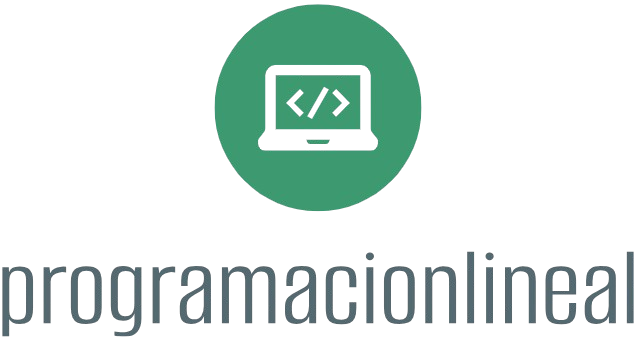Mastering Programming Concepts for Efficient Software Development
Programming is the backbone of modern technology, powering everything from simple websites to complex applications and systems. At ProgramacionLineal.net, we focus on helping developers of all levels improve their coding skills, understand algorithms, and build efficient, maintainable software.
Whether you’re working with Python, Java, C++, or exploring new paradigms like functional programming, having a solid grasp of core concepts is essential. Regular practice, understanding best practices, and staying updated with industry trends are key to success in this fast-evolving field.
Taking Breaks: Relax and Recharge
Programming requires intense focus, so it’s important to take breaks to maintain productivity and creativity. For a bit of light entertainment, exploring casino bonuses can be an enjoyable way to unwind responsibly during your downtime.
- Start with the Basics
Begin by familiarizing yourself with fundamental programming concepts if you’re new to coding. Concepts such as variables, data types, control flow (if statements, loops), and functions are crucial to understanding Swift. Online courses, tutorials, and introductory books can provide a solid foundation.
- Utilize Official Resources
Take advantage of Apple’s official documentation and resources, including the Swift Programming Language book. The Apple Developer website offers comprehensive guides, sample codes, and best practices tailored to Swift.
- Leverage Online Courses and Tutorials
Enroll in online courses that focus specifically on Swift programming. Platforms like Udemy, Coursera, and Codecademy offer structured learning paths with hands-on projects. Look for courses that offer video content, quizzes, and community support.
- Practice Coding Regularly
Regular practice is essential for mastering any programming language. Utilize coding platforms like LeetCode, HackerRank, or Codewars to solve challenges in Swift. This practice helps reinforce your learning and develop problem-solving skills.
Mastering programming requires both structured learning and mental flexibility. Many developers find that alternating between coding practice and strategic breaks improves retention.
Interestingly, the cognitive focus needed for debugging shares similarities with strategic games available at the Jokaviproom Portal, where pattern recognition skills get tested. Remember to balance your study sessions with activities that keep your mind sharp. Consistent practice combined with proper rest will accelerate your programming journey significantly.
- Build Projects
Apply what you’ve learned by building real projects. Start with small apps such as calculators, weather apps, or to-do lists. Gradually increase the complexity of your projects as you become more comfortable with Swift. Building projects not only enhances your skills but also adds to your portfolio.
- Understand Swift’s Unique Features
Swift has several unique features, such as optionals, type inference, and closures. Spend time understanding these concepts, as they are fundamental to writing clean and efficient Swift code. Working with optional values, in particular, is critical in managing the absence of values safely.
- Explore SwiftUI and UIKit
Swift is often used in conjunction with frameworks like SwiftUI and UIKit for building user interfaces. Learn the basics of these frameworks alongside Swift to understand how to create visually appealing and responsive apps. SwiftUI, in particular, is known for its declarative syntax, making UI building intuitive.
- Join a Community
Engage with the Swift programming community through forums, social media, and local meetups. Platforms like Stack Overflow, the Swift Forums, and Reddit have active communities where you can ask questions, share knowledge, and collaborate with fellow learners and developers.
- Read Code and Open Source Projects
Reading other people’s code can provide valuable insights into coding styles and best practices. Explore open-source Swift projects on GitHub to see how experienced developers structure their code, manage Xcode projects, and handle various programming challenges.
- Stay Updated
Swift is continually evolving, with new features and improvements introduced regularly. Keep up with the latest updates and best practices by following Apple’s announcements, subscribing to Swift-related blogs, and engaging with the community. Knowledge of the latest Swift versions will help you write more efficient and future-proof code.
- Debugging and Problem Solving
Learn to effectively debug your Swift code using Xcode’s debugging tools. Understanding how to read error messages, set breakpoints, and test different variables will significantly improve your problem-solving skills.
Mastering programming fundamentals opens doors to countless opportunities, from building robust applications to solving complex problems efficiently. As developers, we constantly seek tools that streamline our workflow and enhance productivity.
Just as we optimize code for better performance, exploring innovative platforms like JokaVIProom can offer fresh perspectives on user experience design. The principles of clean architecture and intuitive interfaces apply across digital domains.
Continuous learning remains key in our field—whether refining algorithms or studying emerging technologies that shape modern digital landscapes.
- Patience and Persistence
Learning a new programming language can be challenging, and you may encounter obstacles. Be patient with yourself and persist through difficulties. Coding skills develop over time, and the more you practice, the more skilled you will become.
By following these tips and dedicating time to coding in Swift, you can build a solid foundation and enhance your skills. Stay curious, keep experimenting, and enjoy the process of learning!










